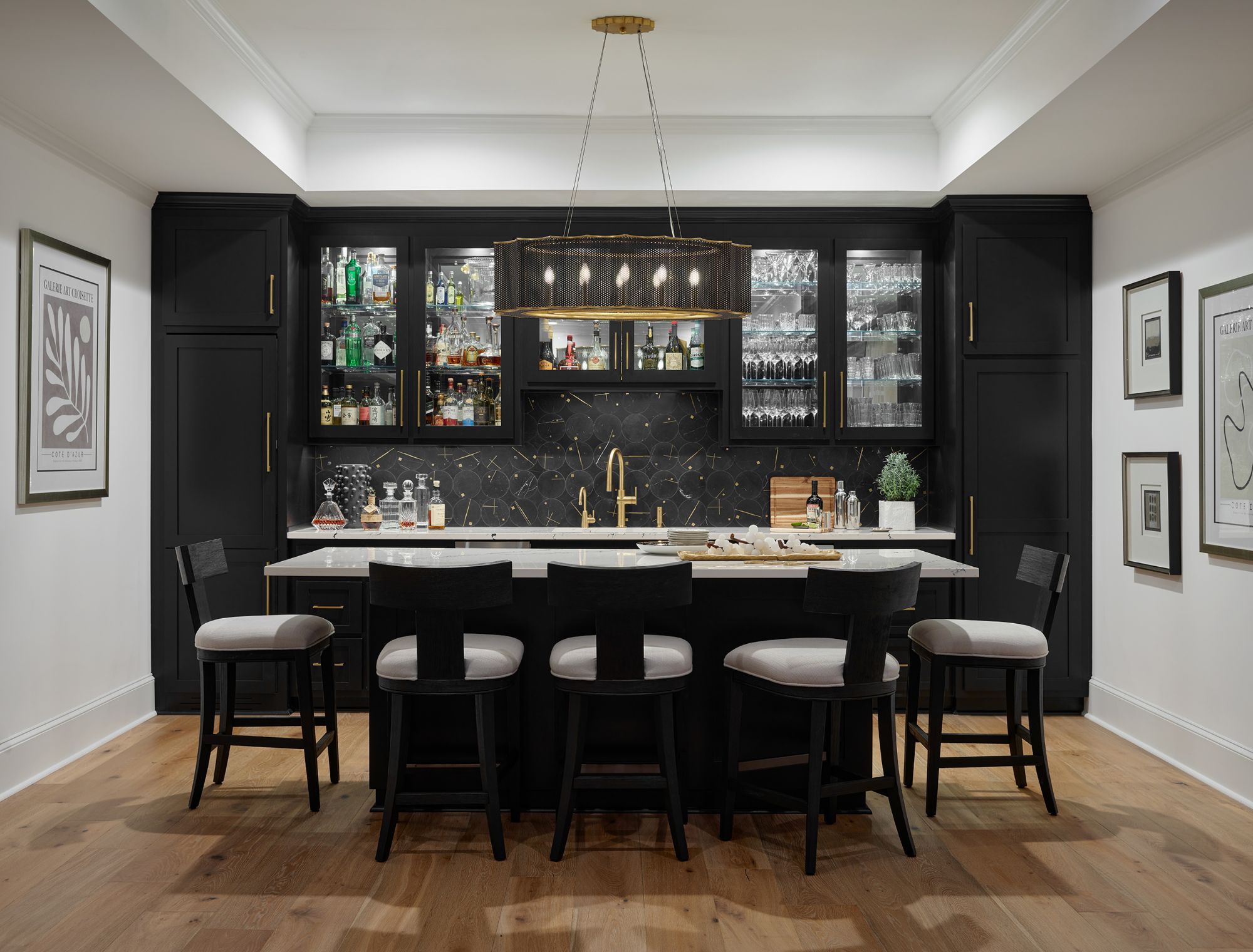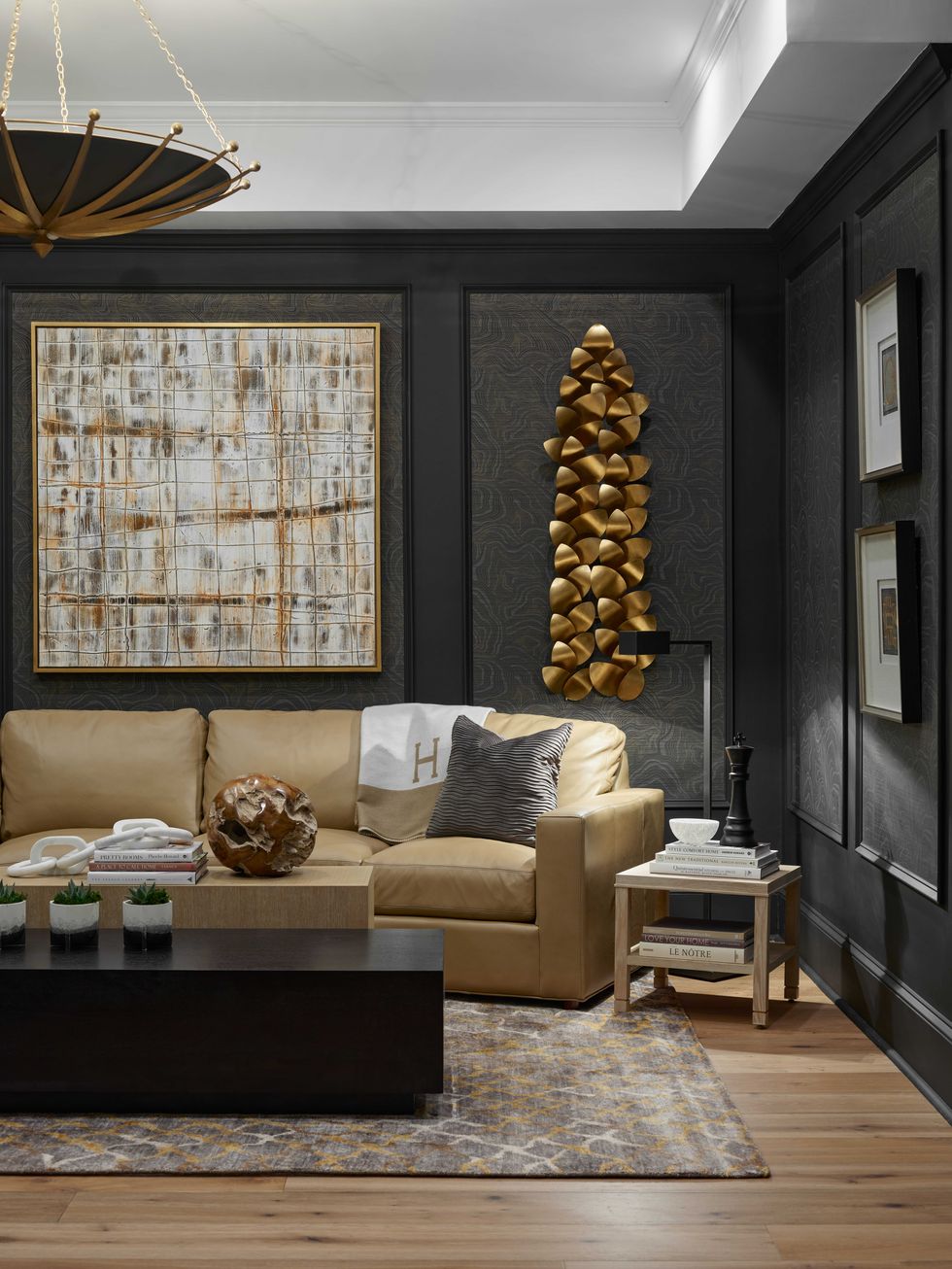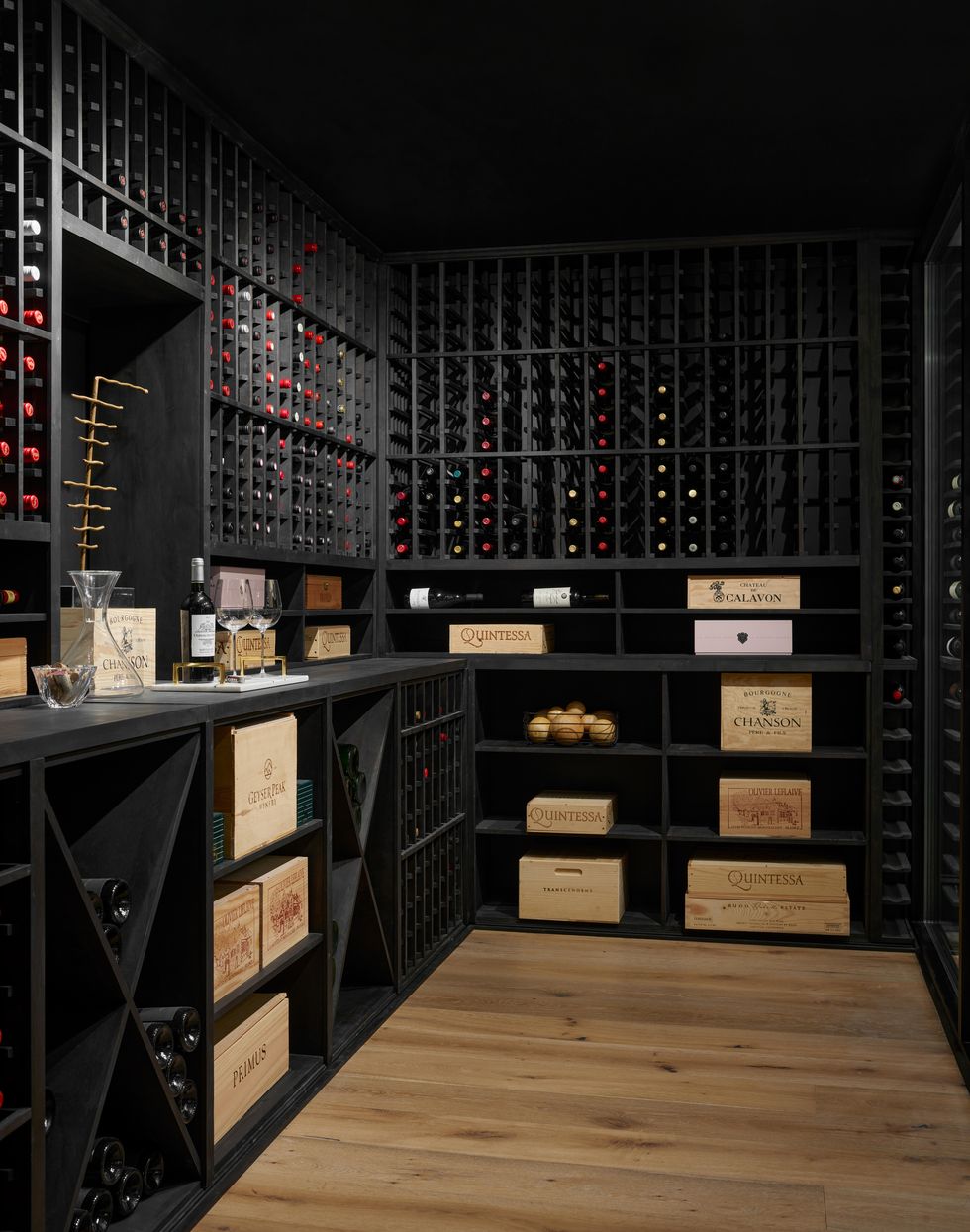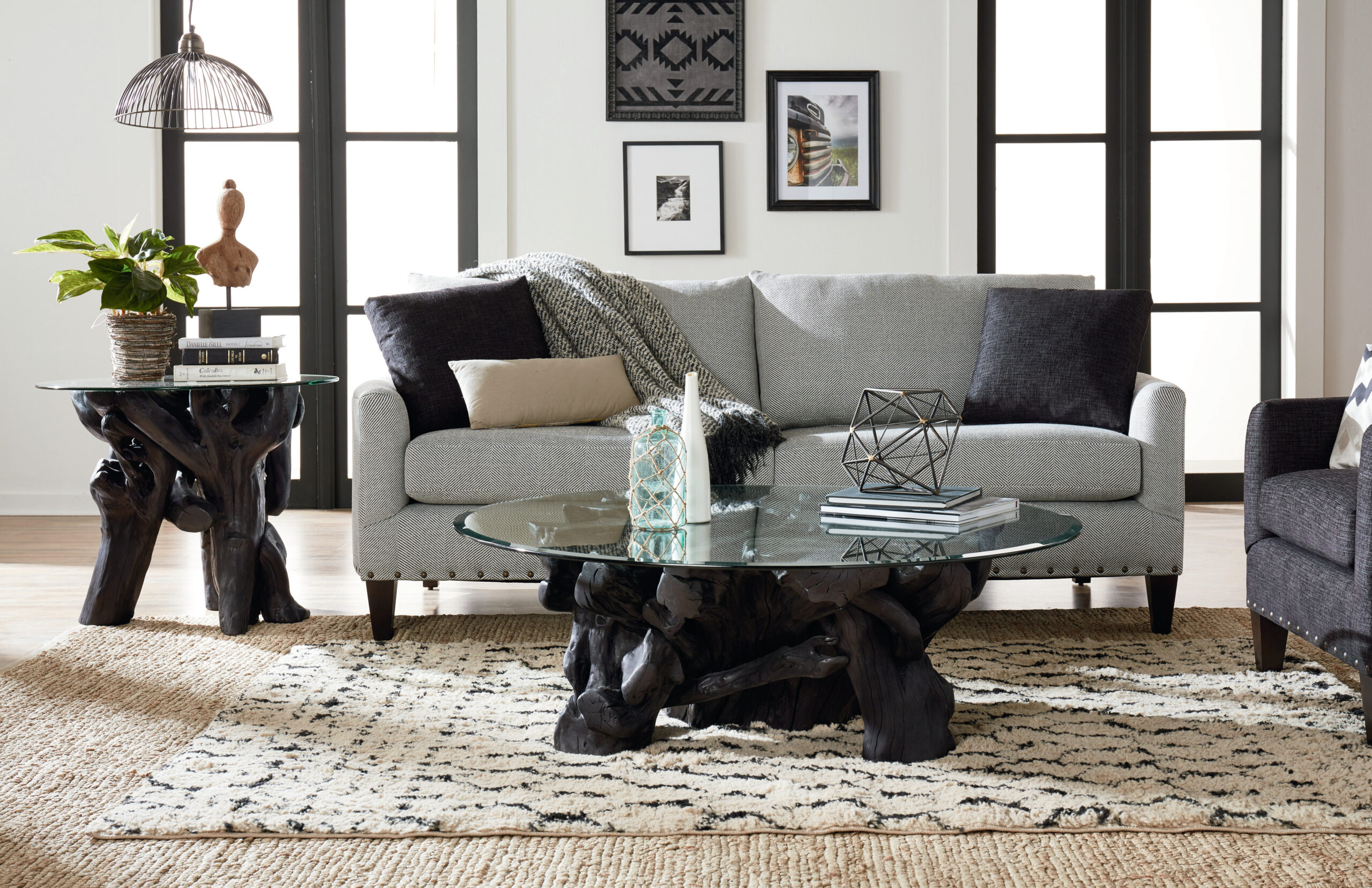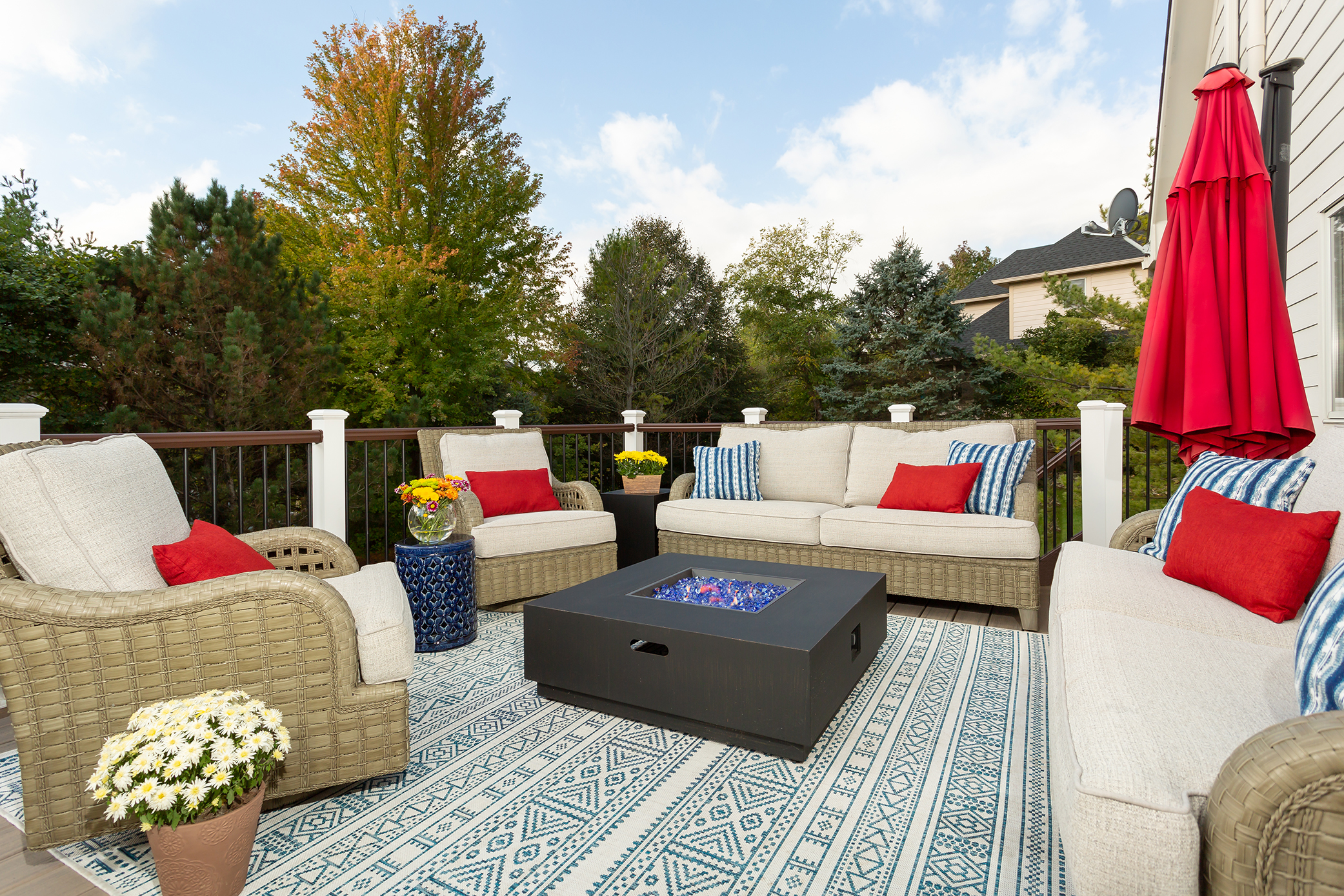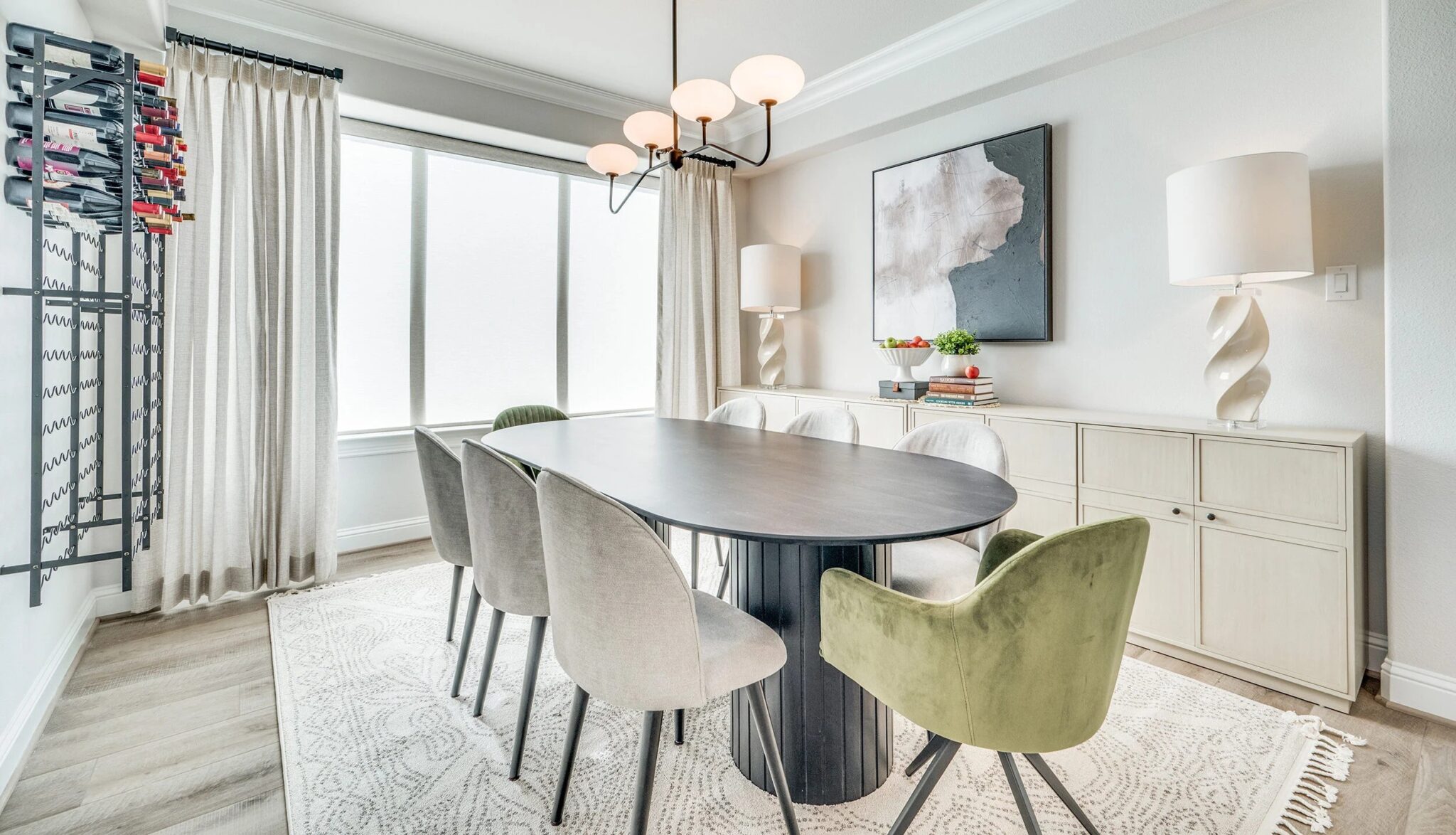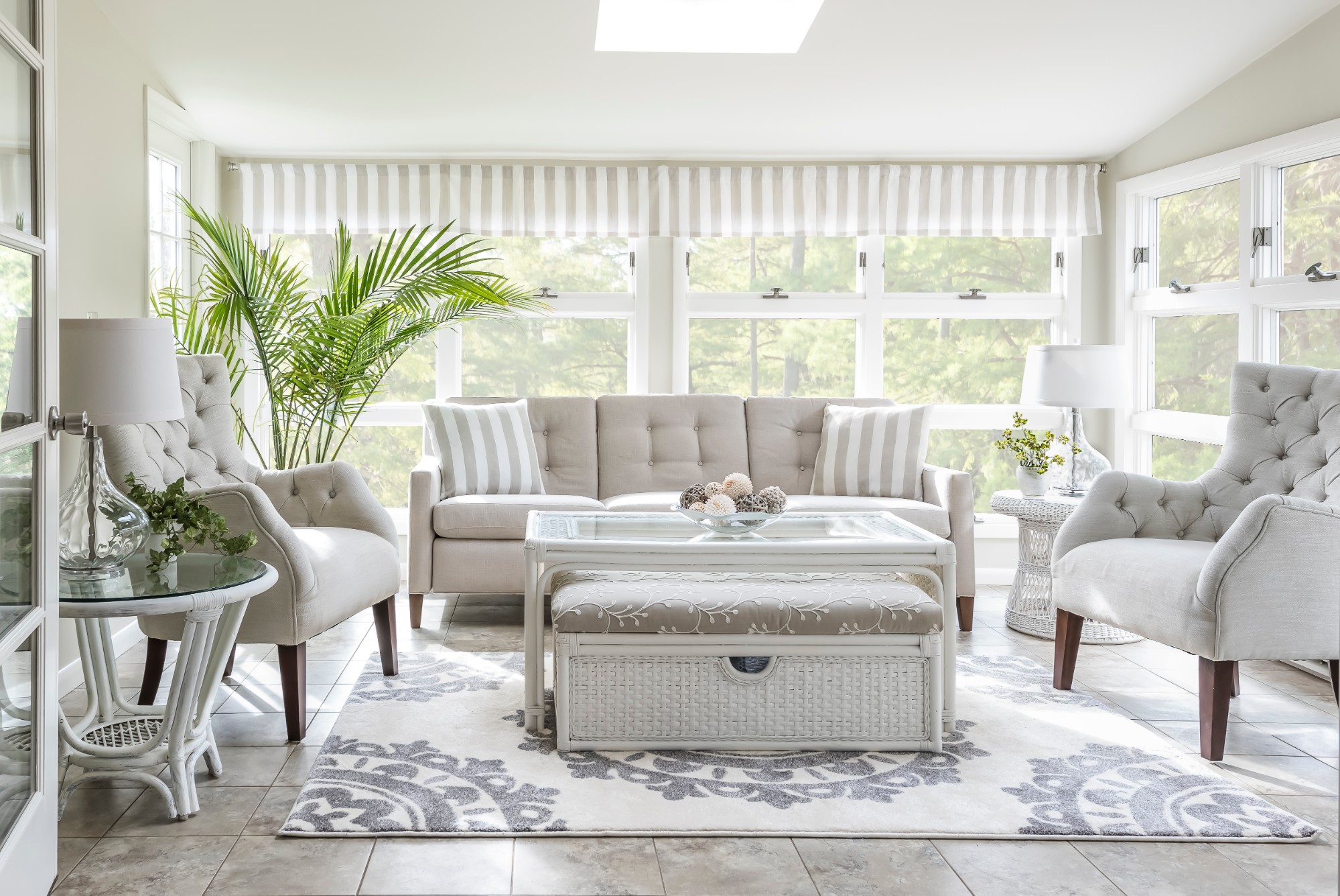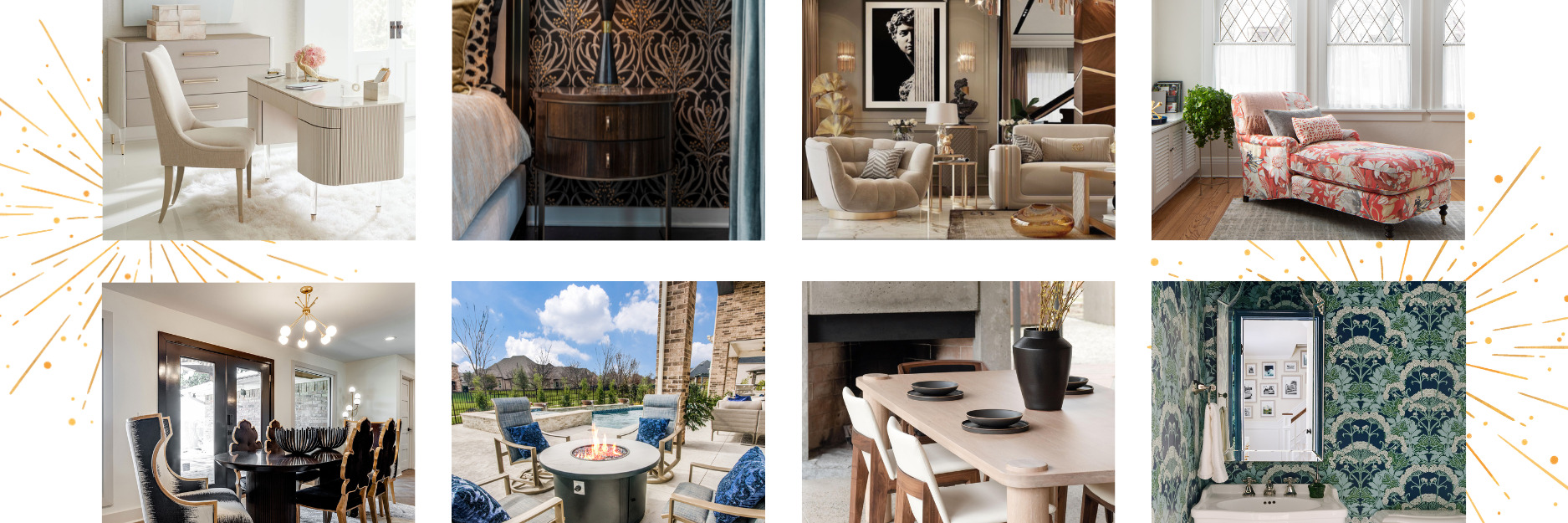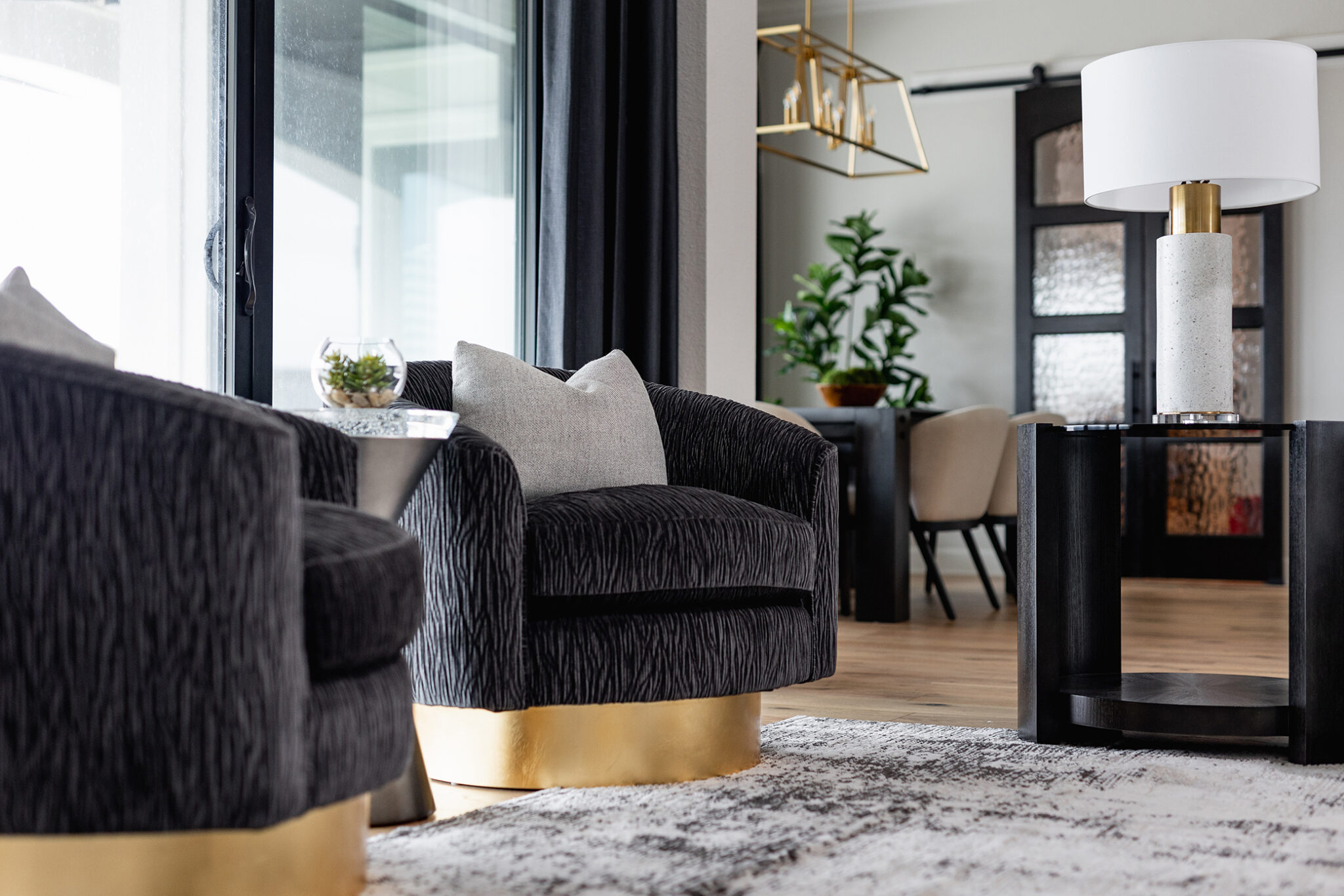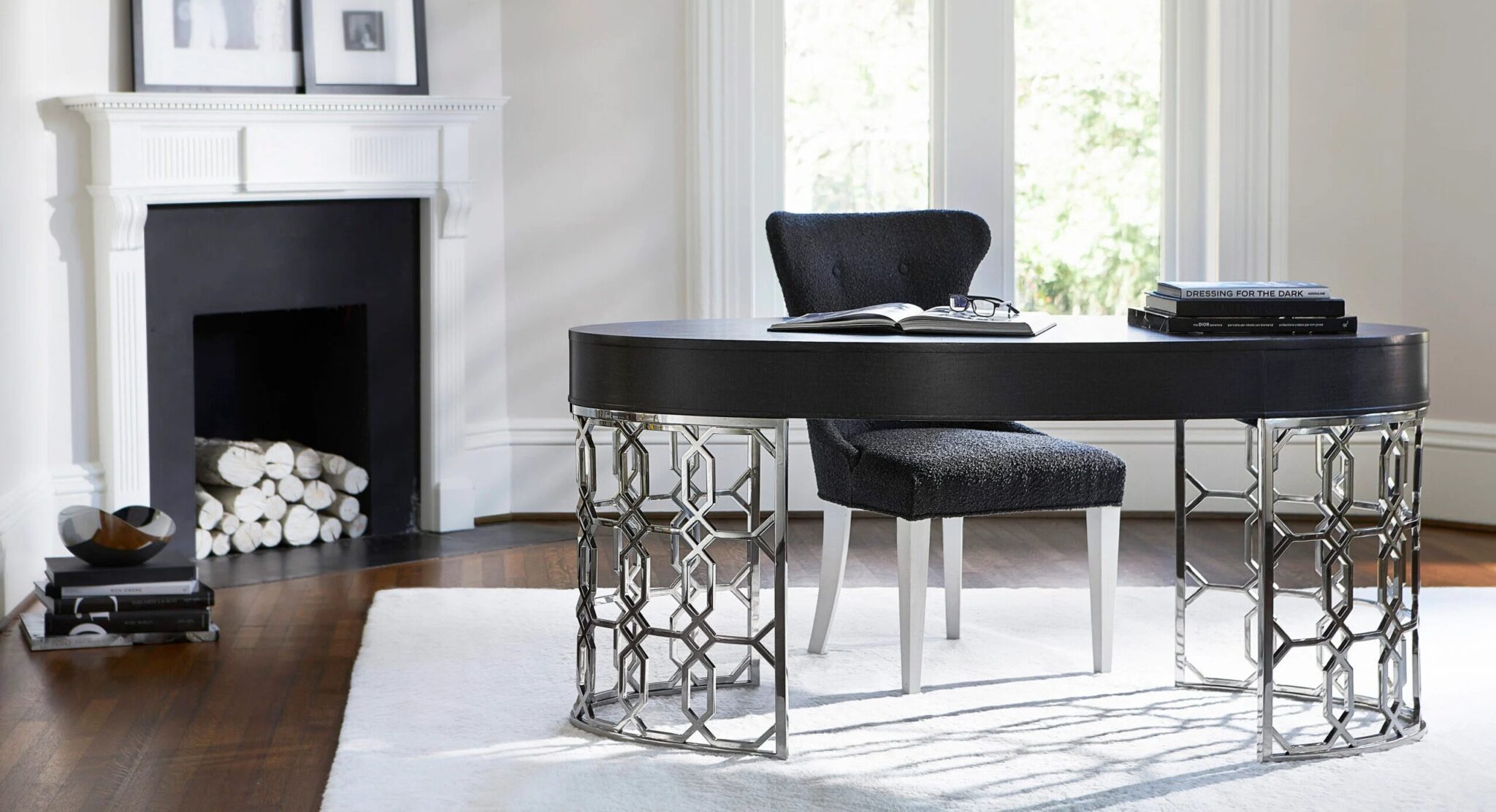The transformative power of paint is well known. It can warm or cool a space, infuse a room with light, or make it feel a bit cozier. A few coats of an inky black or deep navy can take a room from unremarkable to magically moody. But how do you then ensure that your space still feels warm and welcoming, rather than gloomy or cavernous?
How to transform a walkout basement into an elegant lounge and wine room using dark colors. You don’t want too much light to hit the bottles of wine. Black paint is perfect—it absorbs light instead of reflecting it. Some tried-and-true advice on how to use dark colors.
1. Get to know your walls first.
If you want a matte dark wall, don’t do it in an area where you’ll have a lot of traffic. If people are brushing up against or touching it while going down the stairs, that’ll show. Also considers the texture of walls before opting for darker hues, especially in matte. Dark paint is challenging—it shows every imperfection. Brand-new drywall is an ideal surface for matte paint for dark shades of paint colors.
2. Add layers of texture.
To soften the matte black walls of this basement lounge, we hung rectangles of textured wallpaper framed by picture molding, painted with a glossy finish. We wanted to create some texture without it being busy. We didn’t want to add a lot of contrast on the walls. We wanted them to recede and help the room feel bigger.
3. Incorporate warm tones of furniture, flooring, and decor.
Dark furniture or floors against dark walls can be overpowering to the eye. Instead, we recommend warmer tones, such as light wood or caramel-colored leather. You also don’t want furniture that’s white and beachy – too much contrast can feel out of place. In a room with more windows and direct light, it’s easier to pull off “that light-dark tension,” but if you’re aiming for a sophisticated look, it can be distracting.
4. Lean into indirect lighting.
To create a relaxing, inviting ambience in a room with dark walls, focus on indirect light. If you have dark walls and light ceilings, choose a light fixture that shines up on the ceiling —an upturned dome chandelier, perhaps. Remember, the dark paint will absorb the light, so shining it on the walls with sconces or other wall-mounted fixtures isn’t a great idea. In a room with light-colored floors, though—like this basement lounge— we will also add floor lamps that shine downward. The indirect light keeps it very relaxing, not too energetic.
5. Try metallic accents.
Lighting fixtures or sculptural art with a touch of metallics is another way to bring in some warmth. We ran strips of gold leaf around picture-frame moldings. But when it comes to actual picture frames and other hardware, we stayed away from polished metals and instead added a little bit of gold.
6. Use glass and mirrored surfaces strategically.
Dark walls and reflective surfaces can mix when executed thoughtfully. We caution against glass-front frames, especially if they’re for a singular large statement piece of art. The reflection can end up having a distracting fun-house effect in a space like this. Instead, we recommend hanging art that doesn’t require a glass frame, like a canvas or textile piece, both of which will soften the room.
On the other hand, when reflective surfaces are grouped together on a dark wall, they can help illuminate the space. For example, for a dash of radiance, we installed mirrors and LED lights inside open cabinetry that’s situated on a dark wall.
7. Don’t forget the details.
Final decorating tip for dark walls is a small but remarkably important one: make the whole look seamless by installing all new plugs, outlets, and switch plates that match the walls.

